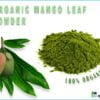No products in the cart.
Return To ShopOops, looks that mega-menu was not imported correctly. Go to Appearance > Menus > edit menu and use the 8theme menu options to select the Static Block for this menu item and show the mega-menu content
Oops, looks that mega-menu was not imported correctly. Go to Appearance > Menus > edit menu and use the 8theme menu options to select the Static Block for this menu item and show the mega-menu content
Oops, looks that mega-menu was not imported correctly. Go to Appearance > Menus > edit menu and use the 8theme menu options to select the Static Block for this menu item and show the mega-menu content
Oops, looks that mega-menu was not imported correctly. Go to Appearance > Menus > edit menu and use the 8theme menu options to select the Static Block for this menu item and show the mega-menu content
No products in the cart.
Return To Shop$18.07 – $59.85
Organic Moringa Leaves Powder
Grade A quality
The moringa leaves are very good source of iron, the moringa leaves contain three times more iron than spinach. They are also very rich in Vitamin A. Moringa is high in fiber which helps in keeping you full for longer.
100% Natural. No Added Preservatives. No Added Sugar.
Hurry Up 

Scientific Name: Moringa oleifera
Chlorogenic acid, an antioxidant found in the leaves, is a natural fat burner that also helps to regulate blood sugar levels, which are linked to your metabolism. It is also beneficial for diabetics because it is known to lower blood glucose levels.
Vitamin A, which supports supple skin, is abundant in the leaves of the moringa plant. It is likewise an extraordinary wellspring of the multitude of fundamental amino acids that assistance in the development of keratin protein required for longer and thicker hair. Moringa powder also has anti-aging properties because it is high in antioxidants.
Moringa oleifera has numerous health benefits. In Asia, it has been used to treat a variety of diseases, including:
Diabetes
Heart disease
Anemia
Arthritis
Liver disease
Respiratory, skin, and digestive disorders

Moringa oleifera is a genuinely huge tree local to North India.
It goes by different names, for example, drumstick tree, horseradish tree or ben oil tree.
Almost all of the tree’s parts are eaten or used in traditional herbal remedies.
This is especially true for the pods and leaves, which are frequently consumed in parts of Africa and India.
The following is a photograph of Moringa oleifera leaves, powder and cases:
Moringa leaves are an excellent source of many vitamins and minerals. One cup of fresh, chopped leaves (21 grams) contains
In Western nations, the dried leaves are sold as dietary enhancements, either in powder or container structure.
Vitamins and minerals tend to be less abundant in the pods than they are in the leaves. However, one cup of fresh, sliced pods (100 grams) contains 157% of your recommended daily intake of vitamin C.
The eating regimen of individuals in emerging countries some of the time needs nutrients, minerals and protein. In these nations, Moringa oleifera can be a significant wellspring of numerous fundamental supplements.
There is, however, one drawback: Additionally, moringa leaves may contain a lot of antinutrients, which can make it harder for minerals and protein to be absorbed.
Something else to remember is that taking Moringa oleifera supplements in cases won’t supply countless supplements.
If you eat a well-balanced diet consisting of whole foods, the amounts are negligible compared to what you consume.
Compounds that fight free radicals in your body are called antioxidants.
Elevated degrees of free extremists might cause oxidative pressure, which is related with constant illnesses like coronary illness and type 2 diabetes .
A few cell reinforcement plant compounds have been found in the leaves of Moringa oleifera.
Notwithstanding L-ascorbic acid and beta-carotene, these incorporate :
Consuming 1.5 teaspoons (7 grams) of moringa leaf powder every day for three months significantly increased blood antioxidant levels, according to one study of women.
Moringa leaf concentrate may likewise be utilized as a food additive. By lowering the rate of oxidation, it extends the meat’s shelf life.
An elevated blood sugar level can be a serious health issue. In point of fact, it is the primary feature of diabetes.
High blood sugar levels increase the likelihood of numerous serious health issues, including heart disease, over time. As a result, maintaining healthy blood sugar levels is critical.
Strangely, a number of studies have demonstrated that Moringa oleifera may assist in lowering blood sugar levels.
However, animal research constitutes the majority of the evidence. A couple of human-based investigations exist, and they’re by and large of bad quality .
Consuming 1.5 teaspoons (7 grams) of moringa leaf powder daily for three months reduced average fasting blood sugar levels by 13.5%, according to a study of 30 women.
Addition of 50 grams of moringa leaves to a meal resulted in a 21 percent decrease in the rise in blood sugar, according to a smaller study involving six people with diabetes.
Plant compounds like isothiocyanates are thought to be to blame for these effects, according to scientists.
Irritation is the body’s regular reaction to contamination or injury.
It is an essential protective mechanism, but if it persists for an extended period of time, it may become a major health problem.
In fact, numerous chronic diseases, including cancer and heart disease, are linked to persistent inflammation.
The majority of whole fruits, vegetables, herbs, and spices have properties that reduce inflammation. Be that as it may, how much they can help relies upon the kinds and measures of mitigating intensifies they contain.
Researchers accept that isothiocyanates are the primary calming compounds in moringa leaves, cases and seeds.
However, research has primarily focused on animal and test tube studies to date. If Moringa oleifera has similar anti-inflammatory properties in humans, it remains to be seen.
A higher risk of heart disease has been linked to having high cholesterol.
Luckily, many plant food sources can really lessen cholesterol. These incorporate flaxseeds, oats and almonds.
Both creature and human-based investigations have shown that Moringa oleifera may have comparative cholesterol-bringing down impacts .

One of our favorite pastimes is coming up with fresh ways to use moringa!
Aduna Moringa has a flavor that tastes like spinach and is green. Dissimilar to other green superfoods like chlorella and spirulina which are green growths and frequently saw as unpalatable, it is not difficult to integrate moringa into your everyday daily practice.
Aduna Moringa is loaded with five essential vitamins and minerals, 25% plant protein, 24% fiber, and six times as many antioxidants as goji berries. As a result, including it in your diet is certain to improve your health and appearance.
Utilizing moringa couldn’t be simpler – blend 1-2 teaspoons (or a portion of a teaspoon in the event that you’re beginning) into any dish or drink that could profit from a sprinkling of spinachy greens. The easiest way to think of it is as a superfood seasoning, so you can use it like any other green herb or seasoning.
Five of our favorite ways to #dothemoringa are as follows:
SPRINKLE… onto salads, eggs, roasted veg, pasta & risotto
BAKE… into savoury bread, brownies, muffins & cookies
STIR… into soups, dips, sauces, casseroles & stews
SHAKE… into apple juice, coconut water & salad dressings
BLEND… into sauces, green juices, smoothies & ice creams
For additional thoughts for how to utilize moringa, look at our heavenly Moringa Recipes.
You can likewise follow us on Facebook and Instagram where we consistently share recipe motivation, exlusive offers and wellbeing tips.
Remember to label us in your recipes via web-based entertainment (@adunaworld) to be in with a possibility being highlighted on our pamphlet and Aduna World blog. You can win a pouch of your choice if you are featured!
Our number one method for utilizing moringa consistently is blended in with squeezed apple. Blend a portion of a teaspoon of moringa with a sprinkle of juice to make it into a smooth glue, then top up and serve.

| Weight | 1.2 kg |
|---|---|
| Weight | 1kg, 400g, 500g, 800g |
There are no inquiries yet.
You must be logged in to post a review.


DHL Shipping Worldwide

Guaranteed Money Back in 7 days return.

3 Day Returns in case u change your mind.
$26.05 – $83.14


$14.04 Original price was: $14.04.$10.53Current price is: $10.53.
Reviews
There are no reviews yet.